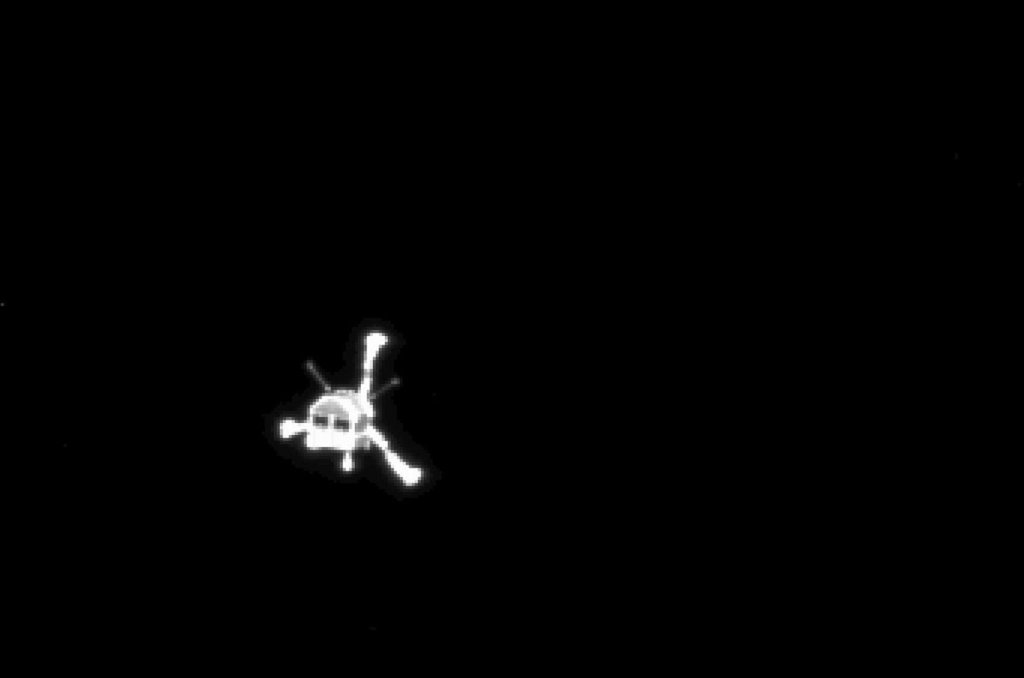On Nov. 12, 2014, a European spacecraft named Philae landed on Comet 67P. To say it was a bumpy landing would be an understatement.
Philae separated from an orbiter called Rosetta. It was supposed to use harpoons to secure itself on to the comet surface, but the harpoons never fired. When it touched down, it immediately bounced back up into space. The first bounce brought Philae half a mile above the comet’s surface before gravity brought it back down.
Philae drifted and bounced around the comet for two hours before Rosetta’s cameras lost track of it. Scientists figured it was stuck in a shady spot where sunlight couldn’t reach its solar panels. The batteries did last for more than two days on the surface, so Philae still got some science done. Most notably, it found organic molecules that had never been detected on a comet before.
Philae was missing for almost two years before scientists found it. Images from Rosetta showed Philae stuck in a dark crevice on top of the rubber duck-shaped comet.
On This Day in Space Archive!
Still not enough space? Don’t forget to check out our Space Image of the Day, and on the weekends our Best Space Photos and Top Space News Stories of the week.
Follow us @Spacedotcom and on Facebook.

